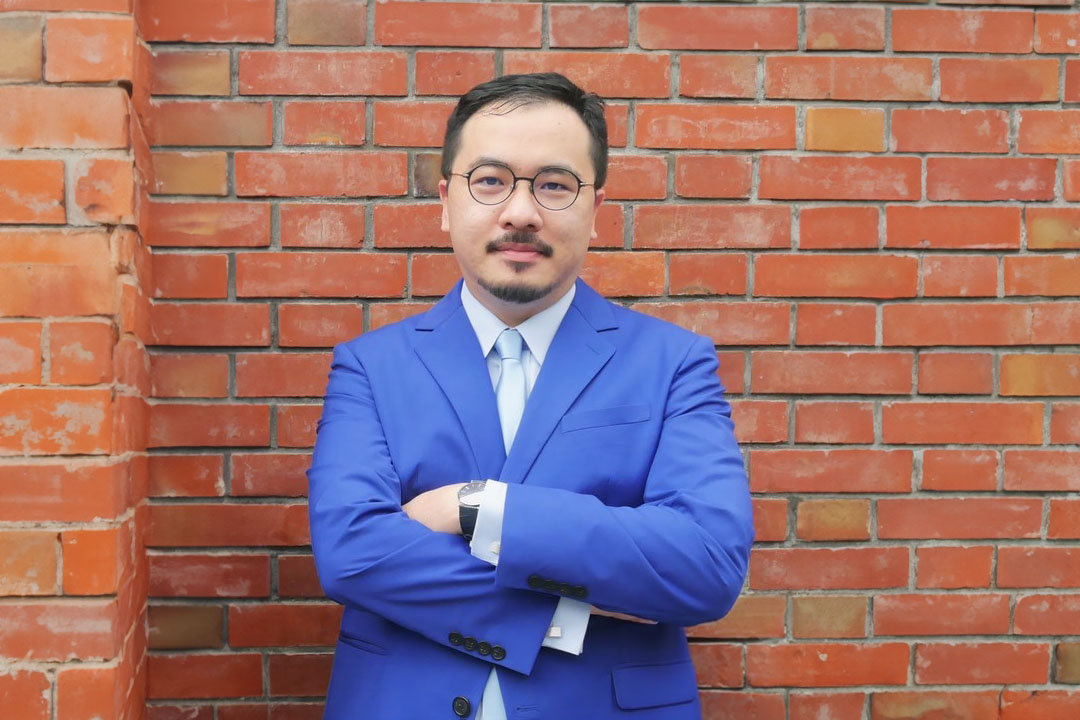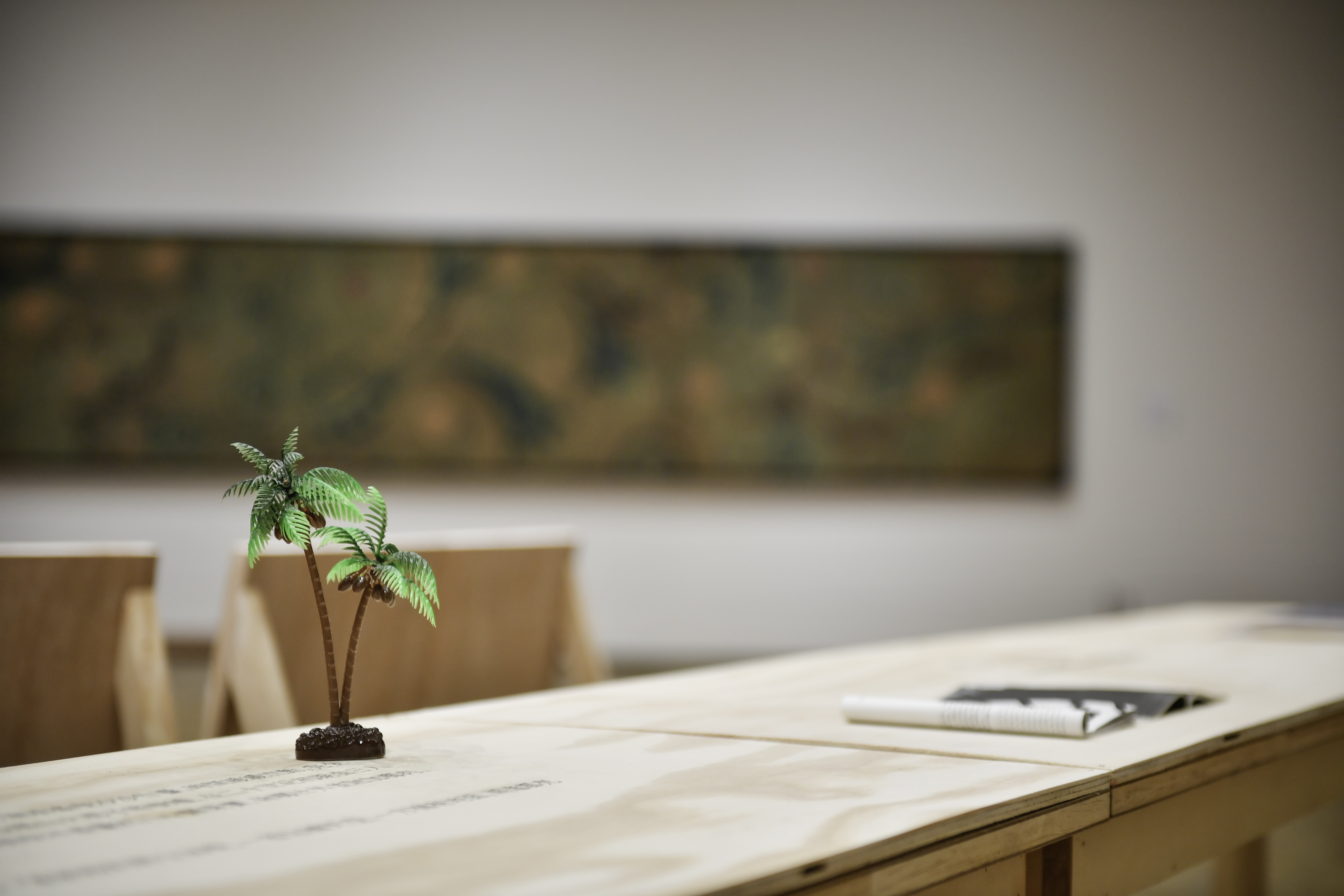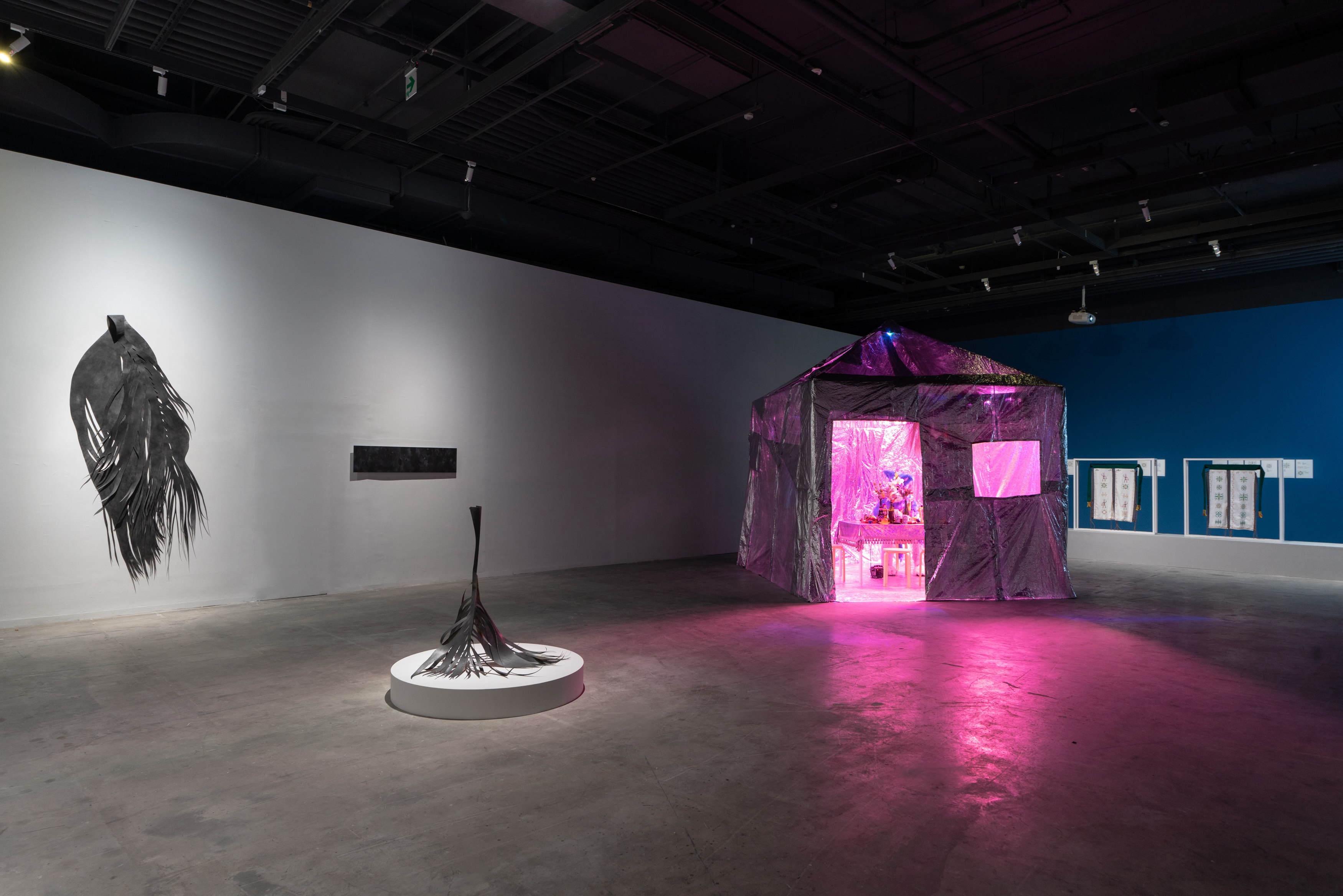People
Curator Conversations: Nobuo Takamori


This conversation is part of a series between Caroline Ha Thuc and curators across Asia Pacific. Nobuo Takamori is an independent curator and the director of “Outsiders Factory,” a curatorial collective that emerged in 2012. Recently, Takamori has organized various shows throughout Asia, including “Post-Actitud” (2011) at Exteresa Art Actual, Mexico City; "After Our Dear Country Failed” (2019) at Digital Art Center, Taipei; "The Secret South” (2020) at Taipei Fine Art Museum; “The Middleman, the Backpacker, the Alien Species, and the Time Traveler” (2019) at TKG+, Taipei; “Another Continent” (2022) at National Taiwan Museum of Fine Art, Taitung; and "The Oceans and the Interpreters” (2022-23) at Hong-Gah Museum and Solid Art, Taipei.
How did you become a curator, and what did you have in mind at that time?
My curatorial career began in 2009. When I worked as a designer and artist, I quickly realized that I was not a good artist and that this path did not fit my personality. By chance, a Taiwanese friend was looking for a curator for a project in Mexico City. I took the job and found it very attractive. The project led to the “Post-Actitud” exhibition organized at Ex Teresa Arte Actual in 2011.
How has your conception of this field evolved, and how would you define your role today?
My practice started with the urgent need to connect the Southeast Asian art scene with Taiwan, a psychologically isolated country struggling with self-identity. The exploration and rediscovery of its position on the map and the re-investigation of its history through a contemporary art perspective are necessary to make its art meaningful in our society.
I attempt to remap my home island within the Global South’s perspective and create a network or platform for encouraging intercontinental dialogues through contemporary art.

Positioning Taiwan in the Global South framework is a strong political statement, especially in our current geopolitical situation. This was the topic of one of your exhibitions in 2020, “The Secret South,” in which you retraced the history of the relationships between Taiwan and the non-aligned countries. How does the development of Taiwanese art fit into this narrative?
Let me start with the Bandung Conference. Although the Taipei government of the Chinese Nationalist Party (KMT) did not participate in the conference, the “exiled government” of “the Republic of Taiwan” in Tokyo sent a representative to observe the conference. It is an obscure history. The existence of Taiwan itself is always intricate, and its inner social structure regarding identity, class, and ethnic groups is also paradoxical. These narratives create gaps for outsiders trying to understand Taiwan, but also reflect the complexities of Cold War histories.
Taiwan is the Galapagos of postwar geopolitics. It is a developed country with the mindset and lifestyle of a developing country, a bizarrely “high income, low life” place. For instance, it is a high-tech US ally, yet unrecognized diplomatically by most countries. Outsiders like to categorize Taiwan within their singular narratives. For example, Chinese-speaking countries like to see Taiwan as part of Greater China. Southeast Asian countries, on the other hand, do not like to include Taiwan within their cultural perimeter. Based on this cartographic logic, I wondered how to leverage these difficulties and challenge these existing narratives. Therefore, I presented a problematic country with a tropical landscape that does not belong to anything in a Global South context.
How do artists address this issue?
Hsu Chia Wei, for instance, navigates the hidden histories of the Cold War. Artists Chang En Man and Ciwas Tahos reflect on their anxieties about identity, as Indigenous Taiwanese people. When Taiwanese artists start to address self-identity issues, they also rediscover the rich and complex layers of Taiwanese history, culture, and society.
You have only curated group shows. Why is that?
I think it is a “tradition” in the Taiwanese art scene for most curators to work on group shows instead of solos.

“The Oceans and the Interpreters” originates in a research residency. In this exhibition, you explored the relationships between Africa and Asia, a very widespread topic. What was your approach, and how did you frame your research?
The Asian-African linkage is a vast topic, but the artistic practices that depict this connection are, in fact, minimal. My priority was to try to find works that were dealing with this connection. I also tried to use this opportunity to introduce some landmark works from Africa to a Taiwanese audience. I hope that artists from different continents can rethink their relationships and evoke interest in future collaborations. So, I assume this project was just a kind of “start-up.”
What was your own research methodology for this process? Did you work in collaboration with curators from Africa?
My first field trip to Nigeria was in 2017. An Indonesian friend introduced me to the Nigerian artist and curator Jude Anogwih. He was the co-curator of the Biennale Jogja XIII in 2015, which focused on Nigeria-Indonesia connections. Jude helped me organize meetings at the Centre for Contemporary Art, Lagos, as well as galleries and artists based in Lagos. Based on my experiences there, I extend my research to other countries, such as the Ivory Coast, Benin, Uganda, and Ethiopia.
However, traveling with a Taiwanese passport has always been challenging. For example, the Senegalese embassy rejected my visa application, so I could not visit Dak’Art, the most important African Biennale on the continent. My Mali visa was also rejected, so I could not visit the Bamako Photography Biennale.
My interest in the Caribbean started through research. In 2019, I contacted local galleries and artists on the internet, such as the Instituto Buena Bista (IBB), directed by Tirzo Martha in Curacao. Again, where I could go depended on geopolitics. Most of the islands I visited were European dependents, as it was too complicated to get visas for independent countries such as Barbados or Trinidad.
You have chosen to present artists from different countries, with artworks from different periods. What were your criteria for selecting the works? Did you commission some works for this exhibition?
I prioritized works that directly addressed the relationship between Asia and Africa. However, since they were rare, I also included works describing past trans-cultural or hidden international relationships during the Cold War.
The commissioned works were an important part of this exhibition. For instance, Tirzo Martha, whose works depict temporary building structures in the Caribbean, created an installation inspired by Taipei’s urban landscape with local materials. In Taiwan, we also have issues with “illegal buildings,” yet some of these apartment extensions can be very creative. Taiwanese artist Yao Jui Chung, who is famous for his photography of ruins, created an artwork about the “Chinese Pagoda” in Kinshasa. This pagoda was actually built for President Mobutu by the Taiwanese diplomatic delegation in the early 1970s.
The show was split between Solid Art Gallery, notably the installation by Tirzo Martha, and the Hong-Gah Museum. What was your policy regarding display?
The basic idea was to divide the exhibition into two parts: a “black box” for videos with heavier historical topics located at the Hong-Gah Museum, and a “white box” dedicated to installations, including the large-scale installation by Tirzo Martha and other works with lighter topics, such as music, dance, and literature, at Solid Art. My strategy was to create a journey of various experiences.
In the museum’s main exhibition hall, for instance, I designed several screening rooms where all the videos could be played at random. The audience could adjust their screening time, like in an open cinema, and choose to watch longer features, such as the classical film Xala (1975) by director Ousmane Sembène.
The exhibition also included participatory artworks, such as Malaysian artist Hoo Fan Chon's How to Dance Like a Mudskipper (2022). This commissioned work is based on his long-term research on the mudskipper, a strange amphibious fish. As the galleries are located in the Guandu area of Taipei, a habitat for mudskippers, we organized a workshop for viewers to participate in the Taipei version of the dance. Together with the “karaoke” style video Misafafahiyan Metamorphosis (2022) by Taiwanese artist Posak Jodian, this form of expression had a strong presence in the show. It is a powerful metaphor for self-projection, storytelling, and character playing. If you consider how karaoke is important to pan-Asian societies, then you will not be surprised by why so many artists like to utilize this format into their artistic expression.
How did you introduce the exhibition?
At Hong-Gah Museum, I opened the show with several oil paintings by Sudanese artist Salah Elmur. Their strong cubist style was a good starting point to discuss “African style” and the influence of mainstream Western art history. These paintings are also based on the vintage photo collection of Studio Kamal, a photo studio operated by the artist’s grandfather in Khartoum during the 1960s and 70s. The work is imbued with a sense of nostalgia for the “old days” and offers a relevant introduction to post-war modern history, which I emphasized. It is followed by Tuan Andrew Nguyen’s documentary The Specter of Ancestors Becoming (2019) about the Vietnamese community living in Senegal, which I find moving, perhaps because I come from a minority myself, and by Our Empty Uniforms Marched to the Echoes of an Invisible (2020). This video installation functions as a preface of the whole introduction because it narrates neglected stories and hidden connections between Asia and Africa.
At Solid Art, the show opened with Stefanos Tsivopoulos’s surrealist video, Land (2006). Although it deals with Greece’s history and modern society I felt that it was a strong metaphor for the Taiwanese audience: three strangers from different ethnic backgrounds wake up on a mysterious island and ask basic philosophical questions, such as “why are we here?” “where is this island?” and “who owns it?”
How did you discover Tsivopoulos’s video?
I discovered this important work in Cyprus in 2017. Instead of visiting the most famous contemporary art show, such as Documenta or Venice Biennale, which I have never visited, and have no interest visiting in the future, I would like to spend more resources and time to visit countries that are ignored or are out of the mainstream. You can always find inspiring artists and talented curators there. Maybe my Taiwanese background made me look into other isolated countries.
How did you build your discourse?
Instead of talking and writing, I built a platform where the artworks could speak for themselves. Of course, I did write panels, but I prefer to limit verbal discourse within the exhibition. Visitors can take more time to engage directly with the artworks. One of the joys of visiting a show is to discover things freely on my own.

Is your research process academic, or do you also try to develop other modes of research?
I chose to work as a curator because I could avoid following the academic route. Yes, I meet scholars, but the folk stories from general villagers might inspire me as well. The atmosphere of places, the interaction with people, or the smell of a town cannot be easily described in academic essays, but work as material for me and my practice.
My research cycles usually take 3 to 5 years, but I conduct several projects simultaneously, which gives me enough space to think and engage with them. During this process, I will inevitably find and meet artists. Things occur naturally through discussions, and trust is paramount to building relationships with the artists involved. However, I try not to directly interfere with their creation.
Most of your curatorial work involves research, including in fields outside the art sphere. Do you think that curators must initiate research and work in a multidisciplinary manner?
Instead of “must,” I suppose I would “suggest.” Research is an excellent method to discover the potentiality of the curatorial practice. The history of Asia, particularly Taiwanese history, is a collage of fragile memories, folklore, stories, and paradoxical narratives. Traditional academic methodologies can provide original materials. However, curating works more like an interface that can bridge academic resources and audiences. Art is not necessarily the best tool, but it is very efficient for speaking of the unspeakable, depicting the un-shaped world, and telling stories to others. After working as a curator, I feel I cannot go back to “academic writing” again.
Overall, are curators today in a position where they can transmit and generate knowledge?
I don’t think the curator is the one who “generates” knowledge. In fact, the artists still do. We are more like editors, story collectors, or journalists. We find storytellers, document their stories, and negotiate with them about how to tell their stories to our readers. We try to publish a collage of stories that make sense, produce fun, and inspire. The value of curating is not to bring us knowledge but experiences. However, these experiences are the gateway to creating our own knowledge ecosystem.
When thinking about exhibitions as platforms for knowledge production, we are also wary of a top-down authoritarian structure. How does one escape this?
A writer could also be authoritarian when narrating a story. We cannot avoid top-down structures altogether. However, contemporary art exhibitions are already platforms for expression that allow for great diversity, and can even create the possibility of paradoxical discussions or physical chaos. Exhibitions can be a space for audiences, authorship, and institutions to re-elevate themselves.

How can this chaos be translated into space?
The chaos I refer to means bringing forth self-paradoxical narratives. A multi-narrative experience can be created inside the show by selecting works from different materials and backgrounds. For example, for “The Middleman, the Backpacker, the Alien Species, and the Time Traveler,” that I curated in 2019 at TKG+, I juxtaposed videos from Julian Rosefeldt’s and Dan Isomura’s migrant worker’s “festival tent,” and karaoke work My Earthy Taste (2018) from Hoo Fan Chon and Tseng Zi Yi. At the same time, the gallery assistant had to take care of the snails from Chang En Man’s work, Snail Paradise: Preface (2019). The exhibition was a festival of hybrid forms, eeriness, and indescribable experiences. As I am good at writing, I feel more like an architect fascinated by providing audiences with an experience of space as a collage of works, a space for participating and thinking.
Do you favor participatory programs to encourage the audience’s expression?
Sometimes participatory projects create a structure or frame for participants. I am a person who likes to be alone, therefore I like exhibitions that give me space to develop my skepticism. Asian culture is already too participatory in its form—for instance, weekly family events. What we lack are exhibitions where people can escape from intensive gatherings and social pressure, physically and psychologically, to make themselves ready to care about abstract subjects deeply, quietly, and in solitude.
Curators work with many constraints and often have to make compromises. If you were absolutely free to develop your own project, what would it be like?
Everything is the result of compromise. The fun part of curating is not running away from compromise but finding good tricks to challenge these limitations. I would love to work for a small-to-middle-scale biennial or triennial, or a similar exhibition overseas, as my career development in Taiwan is bound by the island’s isolation.
Caroline Ha Thuc is a writer, researcher and curator based in Hong Kong.







